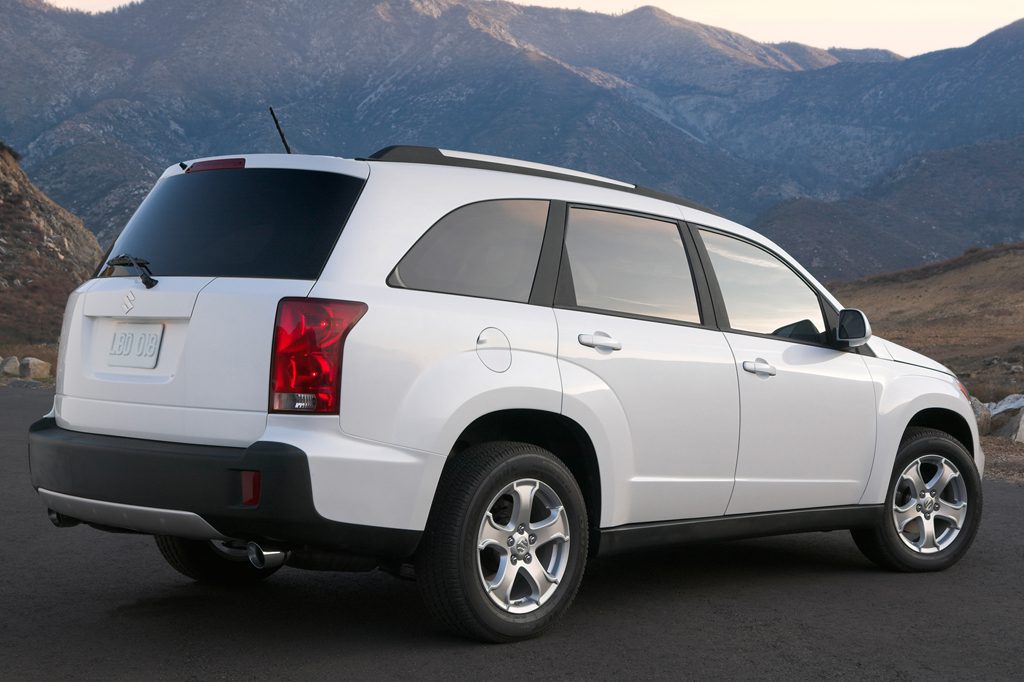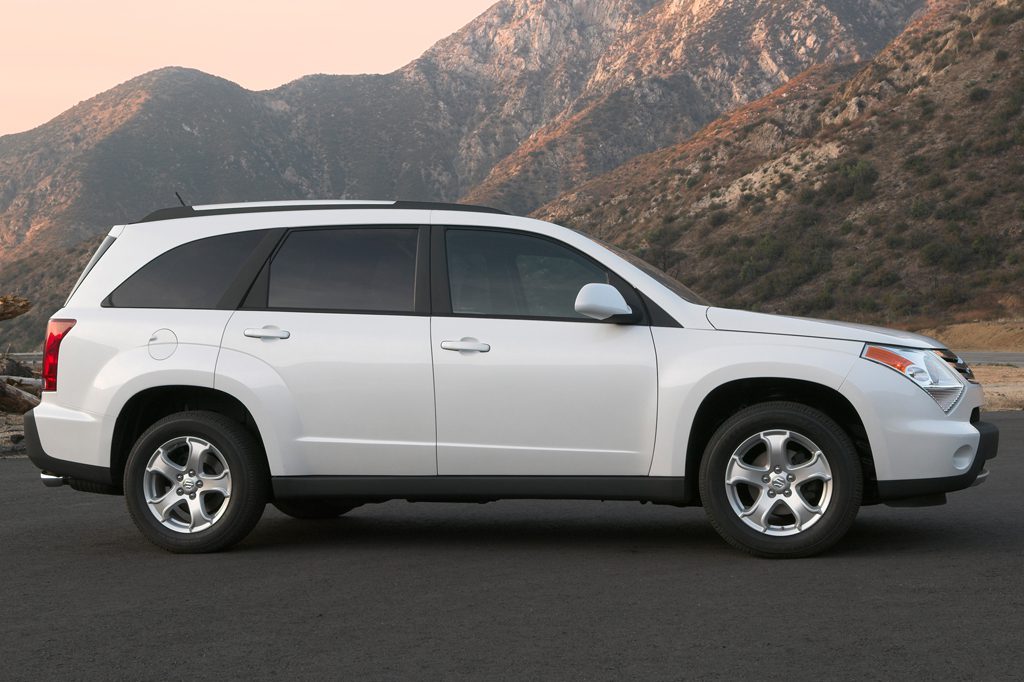| Midsize SUV; Built in Canada |
|
|
| Good condition price range: $8,800 – $16,200* |

2008 Suzuki XL7

2008 Suzuki XL7

2008 Suzuki XL7

2008 Suzuki XL7
| Pros: |
|
| Cons: |
|
Suzuki’s 2007 redesign improved on the trucky, previous-generation XL7, but it still trails the competition for value and overall refinement. XL7 shines only for acceleration and transmission performance. For ride, handling, and quietness it falls far short of class leaders such as the Honda Pilot and Saturn Outlook.
Overview
Suzuki replaced its homegrown midsize sport-utility vehicle for 2007 with a design borrowed from General Motors. Again named XL7, the new flagship wagon adopted the car-type structure of the Chevrolet Equinox and Pontiac Torrent, but differed in styling and engine. The 2001-2006 XL7 used a truck-type design and a 185-hp V6. This 2007 version was about 10 inches longer, had a 252-horsepower V6, and seated up to seven. Equinox and Torrent, in contrast, had a 185-hp V6 and seated five. XL7 came in base, Special, Luxury, and Limited trim, each with a choice of front-wheel drive or all-wheel drive (without low-range gearing). A five-speed automatic was the sole transmission.
Antilock braking and traction/antiskid control were standard. Front side airbags were not available, but curtain side airbags that covered all seating rows and included rollover deployment were standard. Seven-seat versions had a load-leveling suspension. A navigation system and DVD entertainment were available, but not together. Additional options included a rearview camera, remote starting, and chrome wheels. Luxury models had leather upholstery and heated front seats. Competitors included Honda Pilot, new Saturn Outlook, and Toyota Highlander.
Yearly Updates
| 2008 XL7 A new base model debuted for 2008, and the previously optional sunroof and navigation system were now standard on the XL7 Limited. |
| 2009 XL7 The Base trim level and all five-passenger models were discontinued for 2009. XL7 now came in Premium, Luxury, and Limited trims. All had a 252-hp 3.6-liter V6 engine mated to a new 6-speed automatic transmission that replaced a 5-speed. |
